When a drug recall happens, it’s not just a notice on a website-it’s a race against time to protect patients. If your pharmacy has a bottle of medication that’s been flagged as unsafe, you need to know before it reaches someone’s medicine cabinet. The difference between catching a recall in 30 minutes versus 3 days could mean the difference between a minor inconvenience and a life-threatening event.
Understand the Three Levels of Drug Recalls
Not all recalls are created equal. The FDA classifies them into three categories based on risk, and each has different response times and requirements.- Class I: Highest risk. These are drugs that could cause serious injury or death. Think contaminated antibiotics, pills with wrong dosages, or drugs with toxic impurities like nitrosamines. You must act within 24 hours.
- Class II: Moderate risk. These might cause temporary health problems or a low chance of serious harm. Examples include mislabeled pills or packaging errors. You have 72 hours to respond.
- Class III: Lowest risk. These won’t harm health but violate labeling or manufacturing rules. Think incorrect expiration dates or missing inserts. You have up to 10 days, but still need to document the action.
Class I recalls make up only 4% of all notifications, but they’re the ones that keep pharmacists awake at night. The FDA requires 100% patient notification for Class I, meaning you can’t just pull the pills-you have to find every person who got them.
Set Up Your Primary Notification Channels
You can’t rely on one method. The FDA and ASHP both say you need at least three. Here’s what works:- FDA MedWatch Email Alerts: Free. Go to www.fda.gov/Safety/MedWatch and sign up. You’ll get weekly summaries and urgent alerts. This is your baseline. Don’t skip it.
- Your Wholesaler’s System: McKesson, Cardinal Health, AmerisourceBergen-all send recall alerts via email or portal. If you’re a chain pharmacy, this is automatic. Independent pharmacies? You’re probably already signed up if you order from them. Check your account settings. These are often the first to arrive because wholesalers get direct notices from manufacturers.
- Your Pharmacy Management System: This is the gold standard. Systems like QS/1, PioneerRx, and FrameworkLTC pull FDA data hourly and match it against your inventory. If a recall hits, the system flags your exact lot numbers, shows you how many bottles you have, and even links to patient records. No manual lookup needed.
One independent pharmacy owner in Ohio told me he gets 15 recall notices a week from RedBook-but 12 of them are for products he doesn’t carry. That’s waste. Integrated systems cut that noise. They only alert you when there’s a match in your stock.
Verify the Recall Is Real and Relevant
Not every alert is accurate. False positives happen. A lot number might be misprinted. A batch might be listed but never shipped to your location.When you get a notice, follow this checklist:
- Check the FDA Enforcement Report: Published every Wednesday. Search by NDC or product name. Compare the recall details to what you were sent. If it doesn’t match, it’s likely a mistake.
- Match the NDC and Lot Number: Your inventory system should show the National Drug Code (NDC) and lot number on every bottle. Cross-reference exactly. Don’t guess. A single digit mismatch means you’re looking at the wrong batch.
- Confirm the recall classification: Is it Class I? That means you need to act now. If it’s Class III, you can wait-but still document it.
- Check the manufacturer’s website: Sometimes they post updates or corrections before the FDA updates its site.
Pharmacists at a clinic in Texas missed a Class II recall in 2023 because they trusted a faxed notice without checking the FDA site. The lot number was wrong. A patient took the drug and had a mild reaction. It was avoidable.
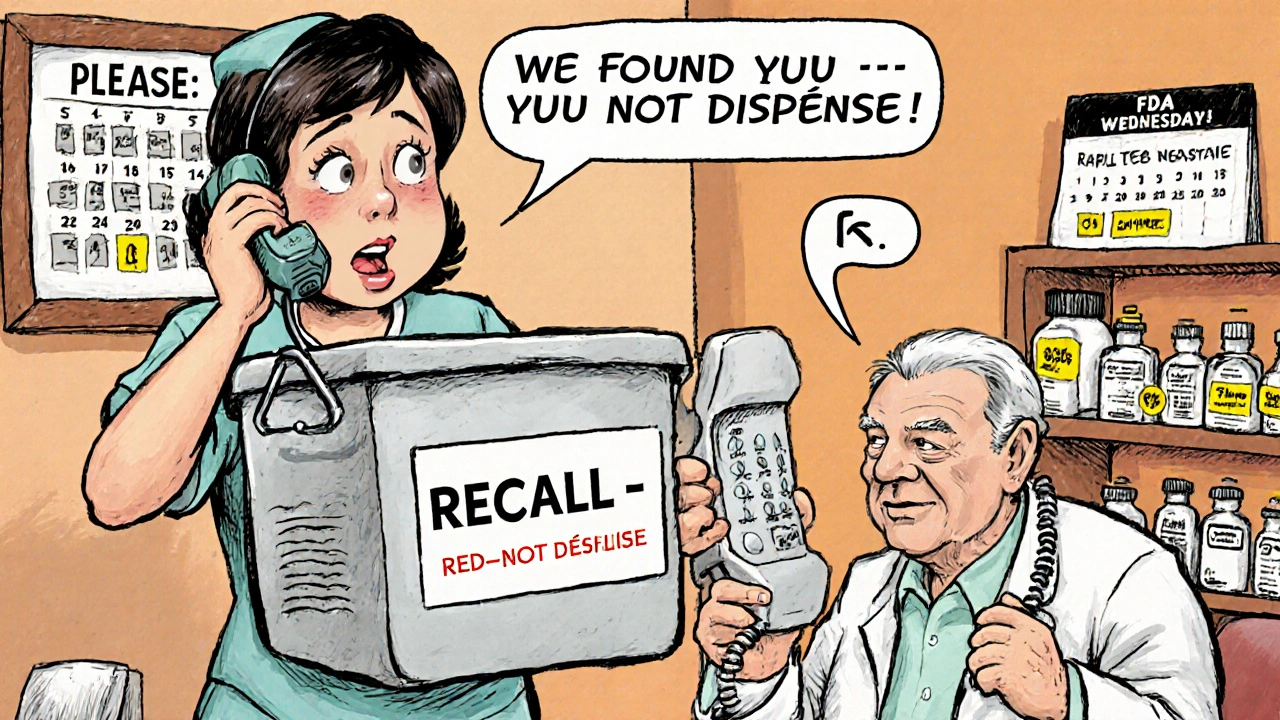
Find the Patients Who Got the Drug
Pulling pills off the shelf isn’t enough. If it’s a Class I or Class II recall, you must notify patients. That’s the law.Here’s how:
- Use your pharmacy system to pull a list of patients who received the drug in the last 6 months (or longer, if it’s a long-term medication).
- Call them. Don’t just email. Many patients, especially older ones, don’t check emails regularly.
- For patients on sync programs (who get 90-day supplies), you must track each fill. A 2023 study found 43% of Class I recalls missed these patients because systems didn’t account for multi-month fills.
- Document every call. Write down who you spoke to, when, and what they did (returned the drug, picked up a replacement, etc.).
Some pharmacies use automated calling systems, but they’re not foolproof. A real person calling is still the most effective method. The FDA requires 100% patient notification for Class I. That means every single person.
Remove and Quarantine the Product
Once you confirm the recall is real and applies to your stock:- Physically remove the affected bottles from shelves and storage.
- Place them in a locked, labeled bin marked “RECALL - DO NOT DISPENSE.”
- Do not destroy them. Wait for instructions from your wholesaler or manufacturer. Some require returns for destruction under supervision.
- Update your inventory system to reflect the removal. This keeps your counts accurate and prevents accidental dispensing later.
One pharmacy in Michigan accidentally gave out a recalled drug because the tech thought the recall notice was a “general alert” and didn’t remove the product from the system. The patient had to be hospitalized. It was a $50,000 lawsuit.
Train Your Staff and Document Everything
Recall response isn’t just the pharmacist’s job. Techs, cashiers, and even managers need to know what to do.Set up a simple protocol:
- Every new hire gets 1 hour of recall training during onboarding.
- Every quarter, run a 30-minute drill: simulate a Class I recall. See how fast your team responds.
- Designate a recall response lead-someone who’s always on call.
Documentation is mandatory. You must keep records for 3 years. That includes:
- Copy of the recall notice
- Inventory verification logs
- Patient notification records (calls, letters, emails)
- Proof of product removal and disposal
Most pharmacies now use electronic audit trails. Paper logs are risky. If you’re audited and can’t show proof you acted, you could lose your license.
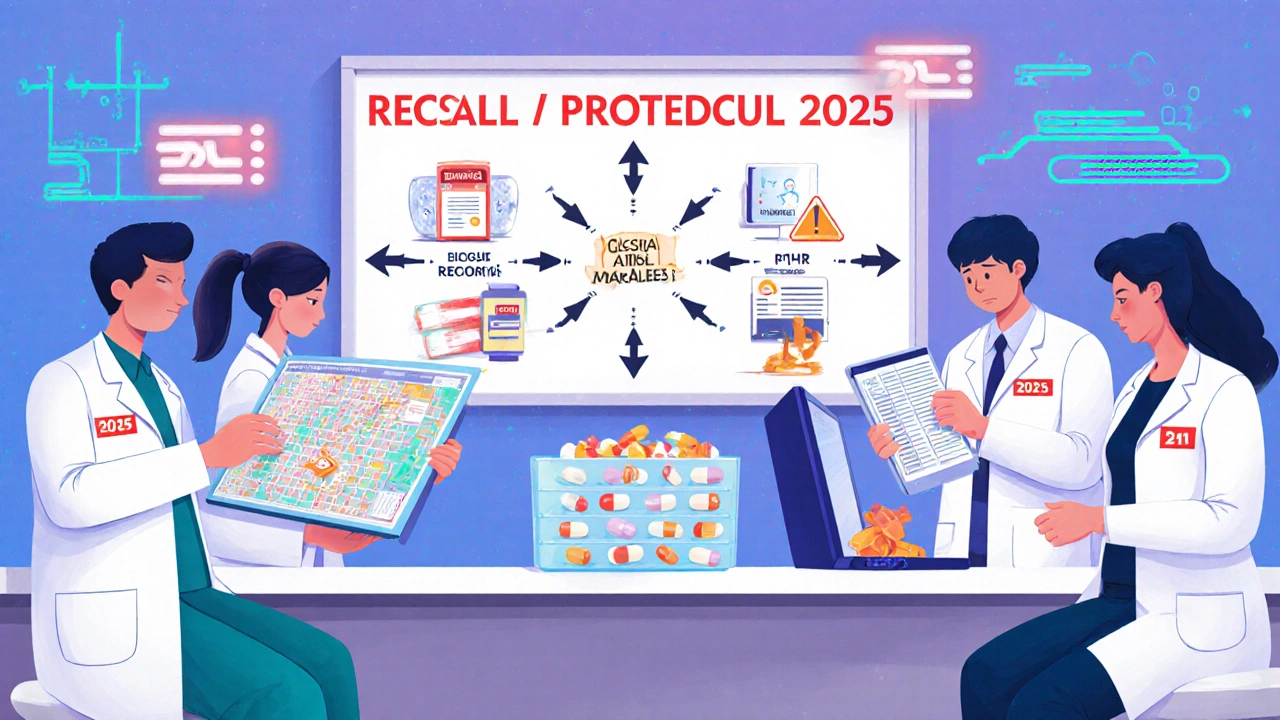
What’s Changing in 2025?
The system is getting smarter. By the end of 2025:- All Class I recalls must include patient-level risk data. That means you’ll get more precise info on who’s at risk.
- Manufacturers must submit recall data in standardized XML format. This will make automated systems more accurate.
- CMS will start checking pharmacy recall response during Medicare audits. If you can’t prove you have a system, you risk losing your Medicare contract.
AI-powered tools are already cutting response time from hours to minutes. By 2027, most pharmacies will have systems that auto-verify recalls, match them to patients, and even send automated alerts-all without human input.
But for now? You still need to be the last line of defense. No system is perfect. Your eyes, your judgment, your diligence-those still matter most.
What to Do If You Miss a Recall
It happens. You’re busy. A notice slips through. If you realize you missed one:- Act immediately. Don’t wait.
- Notify your wholesaler and the FDA’s MedWatch system.
- Find every patient who got the drug. Call them.
- Document everything you did to fix it.
Transparency matters. The FDA and state boards look more kindly on pharmacies that admit mistakes and fix them quickly than those who hide them.
How often should I check for drug recalls?
You should check at least once a day, preferably first thing in the morning. FDA Enforcement Reports come out every Wednesday, but urgent recalls can happen any day. If you use an integrated pharmacy system, it will alert you automatically. Still, do a manual check once a week to confirm nothing was missed.
Do I need to pay for recall notification systems?
No, FDA MedWatch alerts are free. Wholesaler notifications are usually free if you buy from them. The cost comes with advanced pharmacy management systems like PioneerRx or QS/1, which charge $2,500+ per year for recall modules. For small pharmacies with few recalls, the free options may be enough-but you’ll spend more time manually checking.
Can I rely on my pharmacy tech to handle recalls?
Your tech can help with inventory checks and documentation, but the pharmacist is legally responsible for verifying recalls and patient notifications. Never delegate final approval. A 2023 study found 73% of near-misses happened because staff assumed someone else had handled it.
What if a recall affects a controlled substance?
You must follow DEA rules in addition to FDA guidelines. Controlled substances require special handling: you must notify the DEA, document destruction or return, and may need to submit a DEA Form 41. Never destroy them without authorization. Contact your wholesaler or DEA regional office for instructions.
How long do I have to respond to a recall?
For Class I recalls, you must verify inventory within 24 hours and notify patients within 8 hours. Class II gives you 72 hours for verification and 48 hours for patient notification. Class III has no strict deadline, but you must still document and remove the product. Delaying puts patients at risk-and you at legal risk.
Final Checklist: Are You Ready?
Before closing your pharmacy each day, ask yourself:- Did I check MedWatch or my system for new recalls today?
- Are my inventory records up to date?
- Do I have a list of patients who received recalled drugs in the last 6 months?
- Is my recall bin labeled and locked?
- Has my team been trained on this week’s recall procedures?
Drug recalls aren’t rare. They’re routine. But they don’t have to be chaotic. With the right systems, clear steps, and consistent habits, you can turn a high-risk situation into a smooth, safe response. Your patients depend on it.
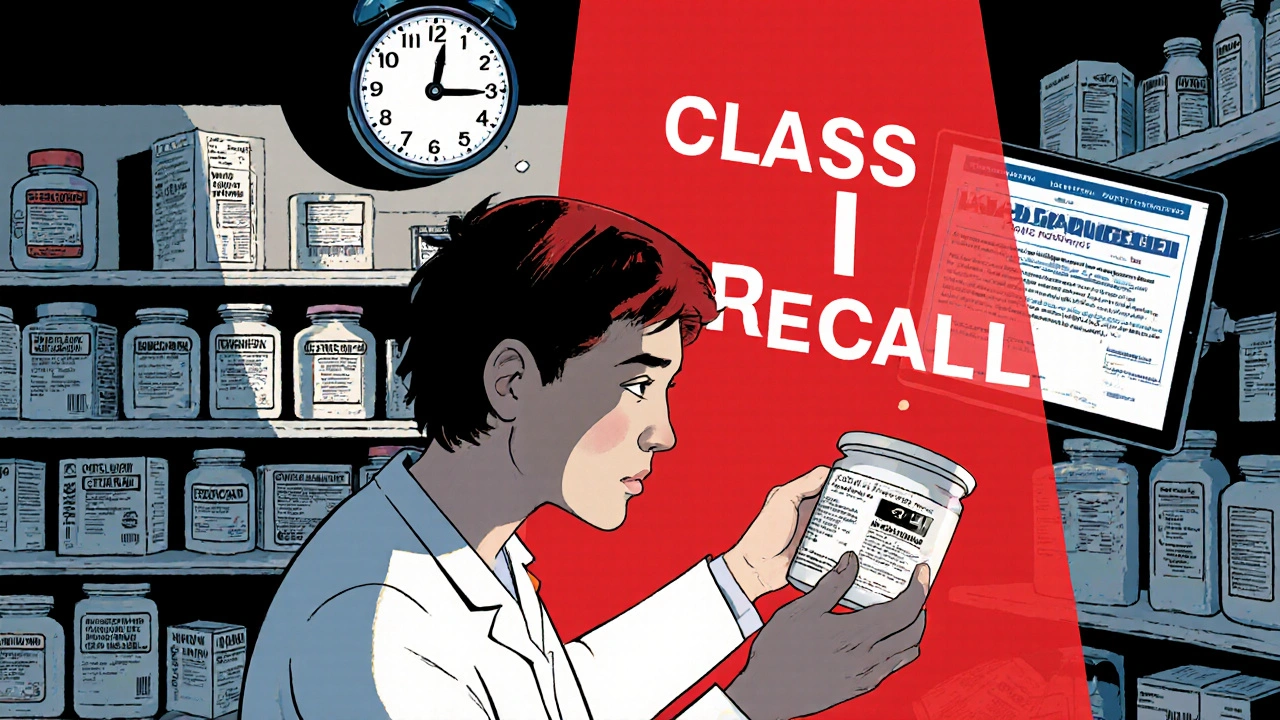
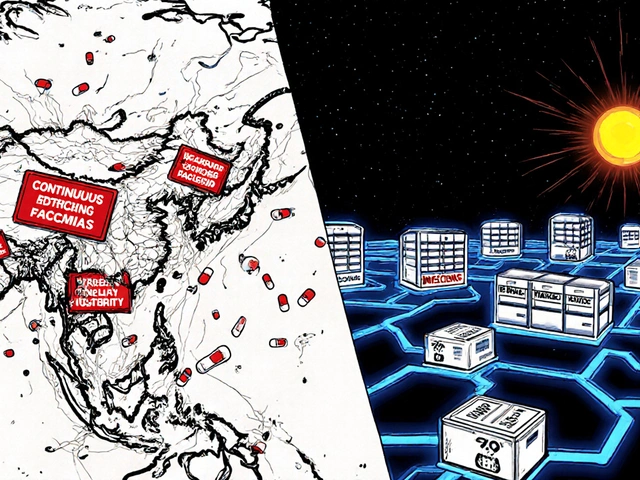
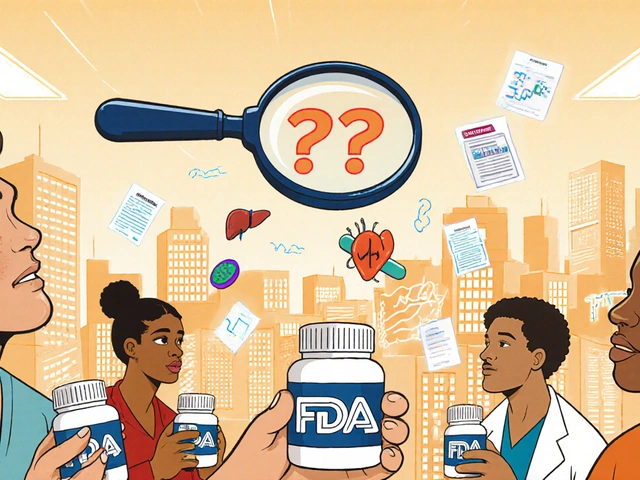
Girish Pai on 18 November 2025, AT 22:58 PM
Let me cut through the noise-this guide is still playing catch-up. In India, we’ve been using AI-driven NDC-matching systems since 2023. FDA’s weekly reports? Too slow. Real-time API integration with WHO’s Global Surveillance System is the only way to stay ahead. If you’re still manually cross-referencing lot numbers, you’re already behind. The future is automated, real-time, and cross-border. Stop treating recalls like a paperwork exercise and start treating them like a cybersecurity threat.